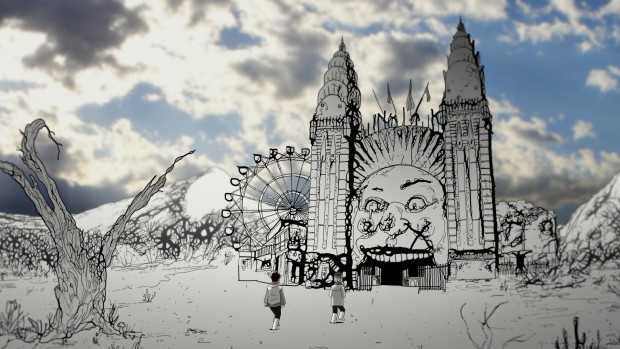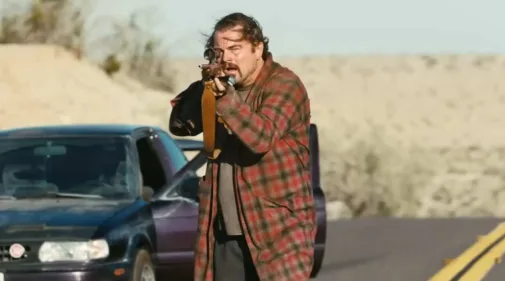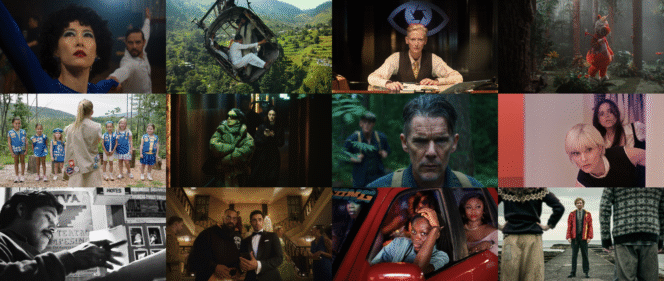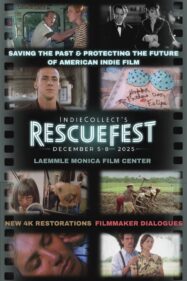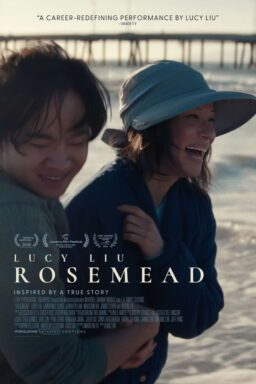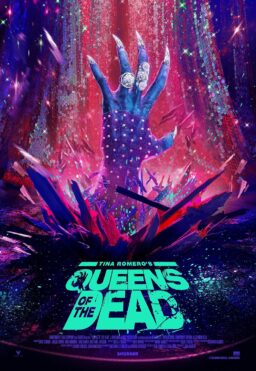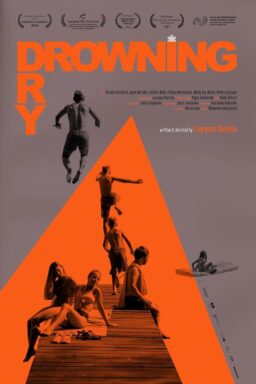Luke Jaden’s short “The Listing” embodies everything
that Montreal’s Fantasia Fest is about. The film takes a classic horror premise—the
haunted house—and puts a twist on it, imagining a ghoul-infested property in
the moments before a realtor shows up to get it ready for the market. The film
was shot far outside of Hollywood, in the Detroit area, with a cast of talented
unknowns. And Jaden isn’t exactly a run-of-the-mill genre filmmaker either. He’s
19 years old, and just graduated high school. Or to put it another way: He’s
exactly the same age as Fantasia.
Since 1996 (when the event was called Fant-Asia, and focused
mainly on movies from Hong Kong and Japan), the Fantasia International Film
Festival has developed a reputation as a horror/fantasy/science-fiction/action
showcase unlike any other. Ostensibly, Fantasia and its ilk take the kind of
movies that usually get consigned to other festivals’ “midnight madness”
programs and make them the entire show—which in Fantasia’s case means spending
three weeks spotlighting offbeat projects from around the world.
It’s especially apt that this is happening in Canada, a
country that’s been “future cult film”-friendly since the 1970s, when favorable
tax laws encouraged local impresarios to flood the market with low-budget
slasher and sexploitation pictures, some of which (like “Porky’s” and “My
Bloody Valentine”) became surprise hits in the United States. Over the past
two decades, the Toronto International Film Festival’s midnight movies have
exposed North American cinephiles to the cutting edge in Hong Kong action,
Japanese horror, and all manner of oddities and extremities from Australia,
France, Spain, and the UK.
Fantasia has taken this basic idea—the celebration of the
dark, the strange, and the shoestring—and has fashioned it into a culture unto
itself. Filmmakers who get into the festival’s program tend to become part of the
Fantasia family, and often come back again year after year, even if it’s just
to socialize with their peers and to be part of the audience. Attendees have
developed their own identity too. When the house-lights go dark, the audience
meows like cats (as a call-back to a short film in a Fantasia program long
ago). When there’s an especially clever kill in a horror movie or
pulse-pounding set-piece in a thriller, they whoop—sometimes disturbingly.

But they’re also broad-minded enough to accept an expansive
definition of “genre.” In 2015, that included such seemingly off-model projects
as “Tangerine” (a micro-budget gender-bending comedy shot entirely
on an iPhone), “(T)ERROR” (a nerve-wracking documentary that embeds
with an undercover FBI informant), and “Miss Hokusai” (a
genteel anime feature about the complicated relationship between two
generations of Japanese artists).
This year’s festival also featured plenty of what most would
expect from an event dubbed “Fantasia.” “Ant-Man” was the
opening night film, and two of the centerpiece slots were occupied by “Cop
Car” and “Dark Places,” both noir-inflected indies
with well-known actors in lead roles—Kevin Bacon as an amoral small-town
sheriff in the former, and Charlize Theron in the latter as a crime victim
trying to capitalize on her fame. The programmers also landed three films by
eclectic Japanese oddball Sion Sono, running the gamut from musical comedies to
manga adaptations to pure surrealism.
Still, the appeal of Fantasia for many of its regulars is in
the new discoveries—not necessarily of great new films and filmmakers, but of
memorable monsters, bold ideas, evocative locations, and startling sequences.
Genre pictures are frequently defined by their best pieces. Here’s a lucky 13
of characters, places, and moments from this year’s Fantasia Fest:
- In writer-director Hur Bum-wook’s animated Korean
science-fiction drama “On the White Planet,” a rare flesh-colored
human in a monochrome world smears his skin with black goop and burgles a mansion
in a beautifully designed and drawn caper scene. - The Rear Window/The Conversation/Kill List
mash-up “Observance” sports multiple suspenseful and
supernatural turns in its story of a professional voyeur who sees too much,
although the movie’s most squirm-inducing shot is a lengthy close-up of a man
trying to bait a hook with hideous looking splayed worms without puncturing his
own fingers. - Douglas Schulze’s mostly dialogue-free “The Dark Below” plunges a skilled diver (well-played by Lauren Shafer) beneath the
iced-over surface of a Michigan lake, and then watches as she struggles to find
her way out before succumbing to frostbite.
- The title object in the Irish occult shocker “Cherry
Tree” has the spooky, mystical look that Brendan McCarthy’s
screenplay requires, especially when director David Keating plunges under its
roots to find a witches’ chamber populated by giant cocoons and millipedes. - Most of the action in the taut (if somewhat ridiculous)
German teen cyber-thriller “Boy 7″ takes place in a
remarkable detention compound, shot by director Özgür Yildirim to resemble the
secret lair of a team of supervillains. - The Ethiopian post-apocalyptic mood-piece “Crumbs” is set in a landscape strewn with forgotten and misinterpreted pieces of
popular culture, protected by a gaunt man who wears a Santa Claus suit and
claims to be able to grant wishes.
- Shortly after director Hallvard Bræin dedicates his
road-chase comedy “Børning” to Hollywood stunt king Hal
Needham, he dives into a sequence that sees a married couple in a muscle car
play chicken with a fellow motorist and end up flipping their vehicle over,
just before the pregnant wife’s water breaks, drenching her face and hair. - Gabriel Carrer’s moody vigilante movie “The Demolisher” pays proper homage to Carpenter, Mann, and Walter Hill in an early image of
its black-helmeted protagonist beating up crooks in front of a storefront
fringed with neon.
- “Some Kind of Hate”’s slasher is an original:
It’s the reincarnated spirit of a depressed teenage “cutter,” who wears a
necklace of razorblades and gives other kids fatal wounds whenever she slices
her own skin. - The Blaine brothers’ “Nina Forever” has
its own creepily metaphorical undead villainess, in the form of a dead
ex-girlfriend who starts crashing the dates of the boy who survived her.
- In the star-studded, slickly produced omnibus “Tales
of Halloween,” one of the segments features a sentient jack-o’-lantern
who crawls around town on tendril-like vines and eats people with its jagged
carved mouth. - Daigo Matsui’s lyrical and loopy “Wonderful World End” is about a low-level internet celebrity whose life is so affected by an
encounter with a shy fan that she cuts herself off from the internet, “retiring”
in a scene for which Matsui covers up her face in the frame with the image of
the cell phone screen where she’s making her announcement.
- “Room 237” producer Tim Kirk works again with that
film’s director Rodney Ascher on the smartly meta “Director’s Commentary:
Terror of Frankenstein,” which takes an actual 1977 horror film and adds
a fake DVD commentary between two ex-collaborators who keep circling back to
painful memories from the shoot. Between their bickering—and the intimations of
an infamous crime connected to the movie—there’s one hilarious scene where the
commenters commiserate over one bit player’s terrible performance, taking the
piss out of some poor schmoe who happened to put in a day’s work on “Terror
of Frankenstein” nearly 40 years ago.
What do all these films have in common? Not much, beyond an
enthusiasm for their forms, and a sincere desire to replicate for other
audiences what their creators experienced when they were becoming movie buffs.
The word “exploitation” has a negative connotation to some,
because it’s so often used to describe a person being used for someone else’s
gain. But in cinema the term mainly refers to any product with elements that
are “exploitable” for marketing purposes—be it something sexy, scary, or
otherwise exciting. To say that Fantasia’s crop of young, obscure, and/or
foreign filmmakers are in the exploitation business isn’t a knock. On the
contrary, what’s so fascinating about the festival is that most of its
programming is poised at the intersection between scrappy personal expression
and crass commercialism. Most of these filmmakers have grasped the first key
lesson of working within popular genres: If they give the viewers just a little
of what they’re looking for in the center of the frame, they can spend the rest
of their time doodling obsessively in the margins.
